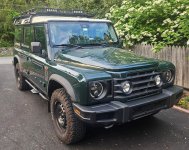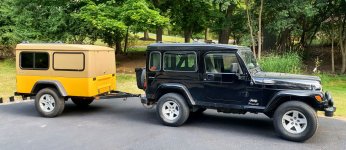84-4runner
Active member
I've been at the Overland Outfitters factory this week, helping them finish up some preproduction samples. I've now got a preproduction Cargo Side Bag and a preproduction First Aid Bag for the rear door panel. Photos of both are attached. I've also attached a photo of the prototype Cargo Side Bag I've been testing in my Grenadier for reference, the preproduction sample is essentially identical to my prototype so as soon as I get home and test it I expect I'll be able to let them know it's ready for production (ignore the wrinkles in the fabric, they relax out in a few days).
View attachment 877027
For reference:
View attachment 877028
The First Aid Bag for the large rear door panel is almost identical to the cargo bag that zips into the same panel but it's got some special features for first aid supplies. It zips open to lie flat and inside are small and medium pockets for the supplies, behind those are larger pockets, and a center panel with elastic loops to hold even smaller medical supplies. Unlike most first aid bags, the organization inside this one is designed so one can find the needed supplies quickly in an emergency when time is of the essence.
View attachment 877031
View attachment 877029
For reference:
View attachment 877030
When I get home I'll install both of these in the Grenadier and I'll also load the first aid bag with supplies to show how the inside organization works. BTW it also zips onto the attachments on the seat backs and the cargo sides so if all one needs is a great first aid bag it can be hung in either of those places instead of on the rear door.
Monday they should have the sample panels for the small rear door ready for me.
what is the floor mat that you have. I have been trying to find a Bedrug to cut down, but yours looks usable.
thanks



































